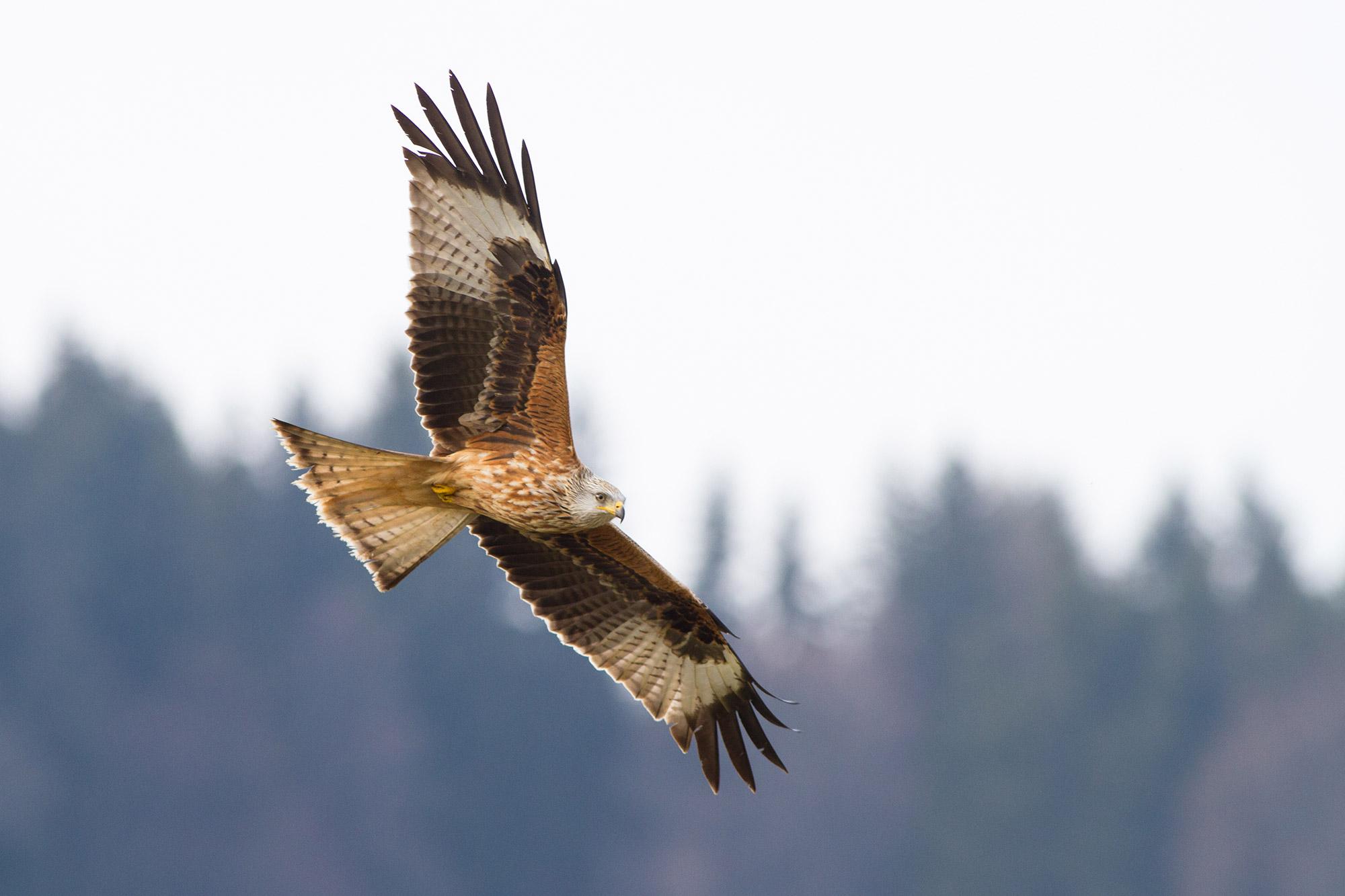How often red kites actually collide with wind turbines

The higher the rotors are mounted, the less likely red kites are to collide with them. A study co-financed by the SNSF tracked almost 3,000 birds The findings can improve future installations.
With its long wings, the red kite uses updrafts to gain height quickly. Zones where the conditions are particularly favourable for this flying technique are often also ideal locations for wind turbines. So it's no wonder that collisions occur from time to time.
A study co-funded by the SNSF and involving the Swiss Ornithological Institute has analysed exactly when and where such fatal incidents occur. Their findings can be used for the planning of future installations. For the project, several research teams from Austria, Germany and other European countries tracked close to 3,000 red kites for up to 11 years using GPS trackers.
More than 500 of the birds came from Switzerland. Ten years ago, they were fitted with lightweight, solar-powered transmitters by the Swiss Ornithological Institute, mostly as young birds. Since then, the researchers have received roughly one signal per hour about the birds' locations, depending on the battery charge.
Recovery and autopsy require enormous effort
The team from the Swiss Ornithological Institute is using this large sample to investigate the red kite’s migration behaviour and its expansion into alpine habitats. "One unresolved question, for example, is why the population in Switzerland has risen sharply in recent decades. In neighbouring countries, the numbers fell until recently," says Martin Grüebler, the institute’s Head of Ecological Research.
For the transnational Life-Eurokite project, the Swiss datasets were combined with tracking data from other European countries. One of the aims of this collaboration is to investigate the causes of death of red kites caused by humans. A recently published analysis of the data for all 3,000 birds revealed that, in 11 years, 41 died as a result of wind turbines. The different research teams follow a standardised protocol to determine the cause of death: GPS data provides information indicating whether the animal died at a turbine's location. If possible, the dead birds are recovered promptly, and an autopsy is performed.
According to Grüebler, recovering the birds requires enormous effort. Sufficient people must always be available throughout Europe, and country-specific regulations must also be observed, such as the involvement of local authorities. The participating researchers from all countries were together able to confirm collisions with wind turbines as a definite cause of death for 25 of the casualties. The remaining 16 were classified as very likely or possible.
No fatalities due to wind power in Switzerland
Almost half of the collisions occurred in the north of Germany, where the number of wind turbines is particularly high. A further 12 collisions took place in Spain and France – often during the red kites’ annual southbound migration.
Of the Swiss cohort, four birds were killed by wind turbines in France, Spain and Germany. There were no deaths recorded in Switzerland itself. '‘However, we don’t, as yet, have as many turbines as our neighbours,” says Grüebler.
The team used GPS data to analyse not only collisions, but also near-collisions. These are situations in which red kites flew past wind turbines without being harmed. These observations provided information on the relative dangers of different types and sizes of wind turbines.
The researchers concluded that the larger the rotors, the more likely it is that a collision will occur. Increasing the rotor diameter by 25.5 metres increased the probability of a collision fivefold. On the other hand, there was a positive effect when the rotors were mounted as high as possible. Red kites with their low flight altitude are then more likely to fly below them.
Different risks for eagles and bats
"In future, the number of wind turbines in Europe will increase several times over. This could make this risk more significant," says Grüebler. Another study by the Life-Eurokite project, which has yet to be published, is looking at the importance of other human-related causes of death for the red kite, such as illegal hunting and poisoning.
Based on their findings on wind power, the research team recommends building turbines with as much ground clearance as possible to protect the red kite. However, it is not quite that simple. As Grüebler explains, higher rotors could in turn be dangerous for other birds of prey such as various species of eagles or vultures. They could also endanger songbirds during migration as well as bats. This is because preferred flight altitude is very species-specific.
For this reason, it is important to find out as much as possible about the habits of various animal species. “The more we know, the better we can plan wind turbines and locations that have the least possible impact on wildlife.”